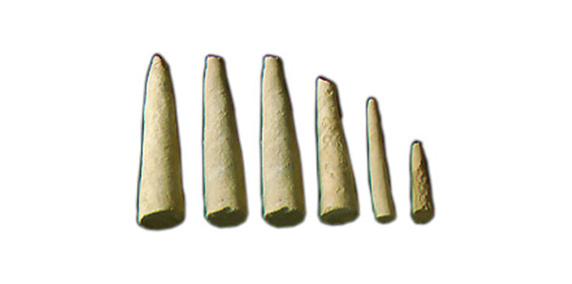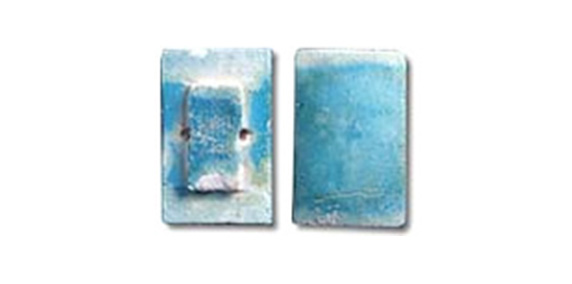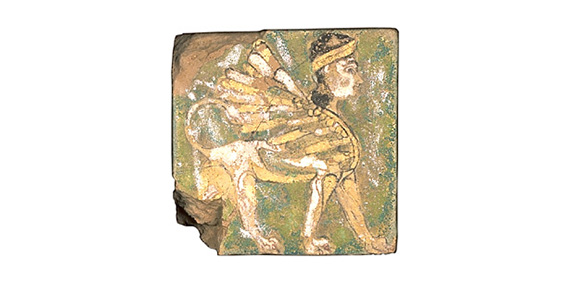Tiles from the Orient
Over the period of several centuries BC in the deserts of Egypt and Mesopotamia, people achieved the impossible tasks of building and decorating pyramids and temples, through trial and error, to express the feeling of awe and reverence towards Gods and Kings. In Mesopotamia, tens of thousands of cone-shaped ceramic nails - clay pegs - colored on the top were produced and placed on the surface of the wall to decorate monotonous walls in geometric patterns. In Egypt, blue tiles were made from sand to pray for the rebirth of the king.
-

- Clay Pegs
- Mesopotamia
4-3rd millennium BC
Smallest: 11mm (diameter) × 48mm (length)
Largest: 23mm (diameter) × 108mm (length)
Patterned walls using these clay pegs are considered to be the origins of mosaic wall decorations.
-

- Glazed Faience Tile
- Saqqara, Egypt
3rd Dynasty (ca. 2682 - 2613 BC)
60 × 37 × 12 (mm)
This is one of the tiles used to decorate the walls of the subterranean corridor, deep under the Step Pyramid of King Djoser in Saqqara, Egypt. The tiles from the Step Pyramid are considered to be the oldest glazed tiles in the world. The photo on the left-hand side shows the back of the tile.
-

- Glazed Tile
- Assyria
8-7th century BC
332 × 327 × 80 (mm)
Terracotta tile from Assyria, with a sphinx design.